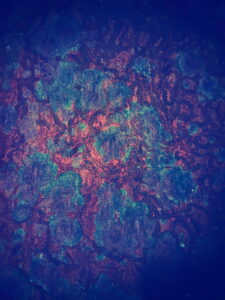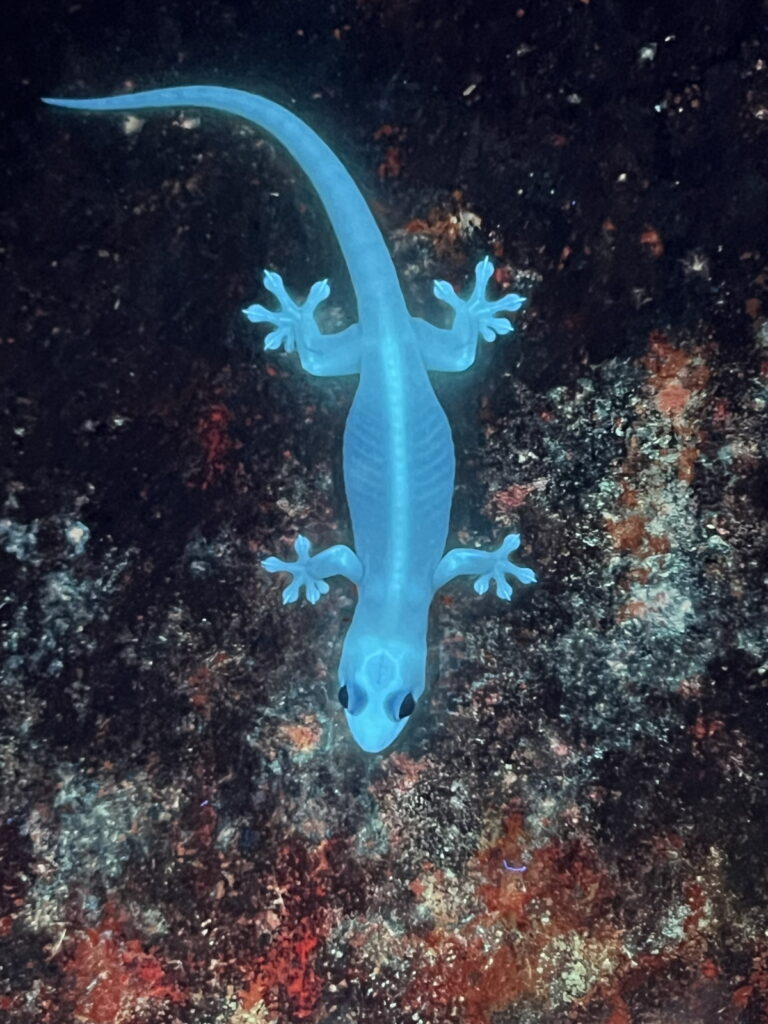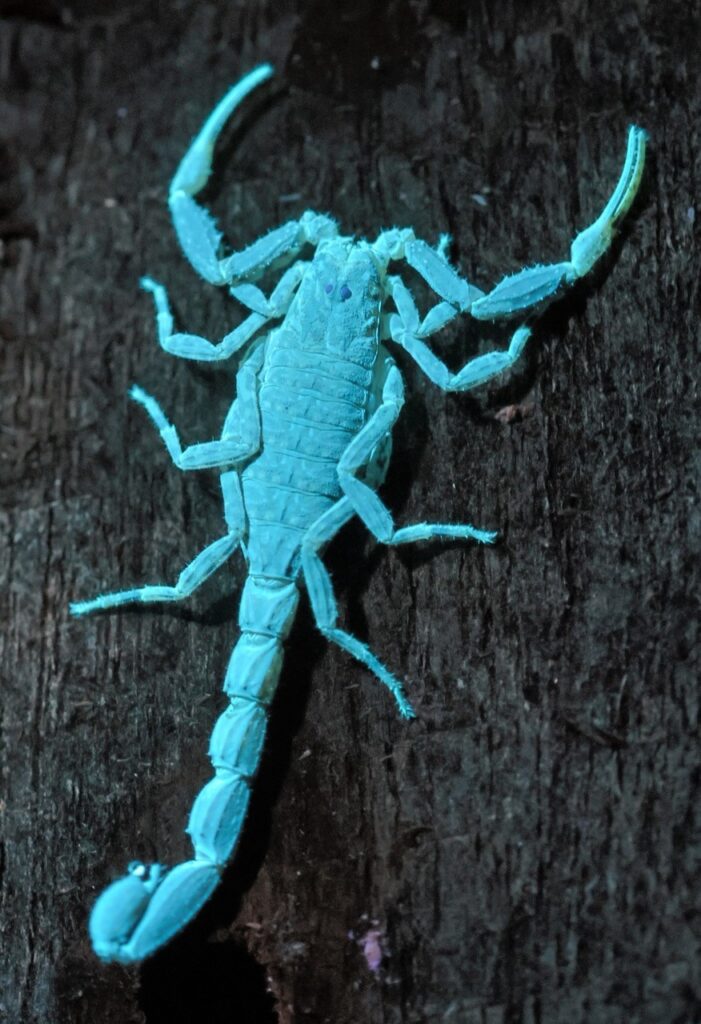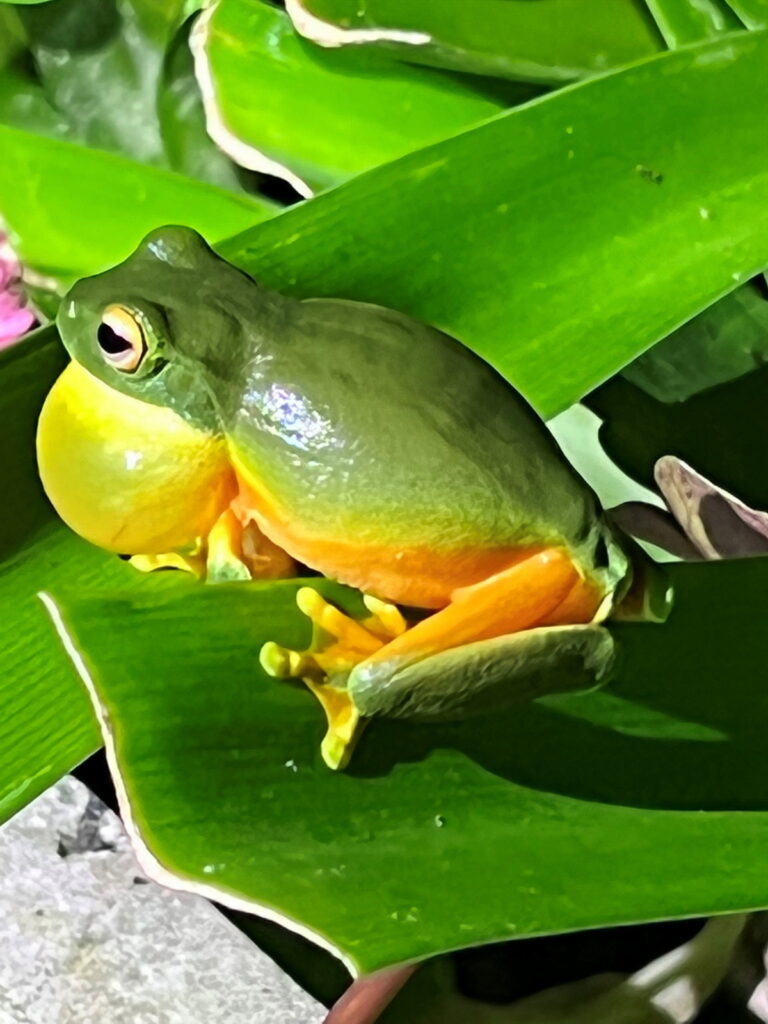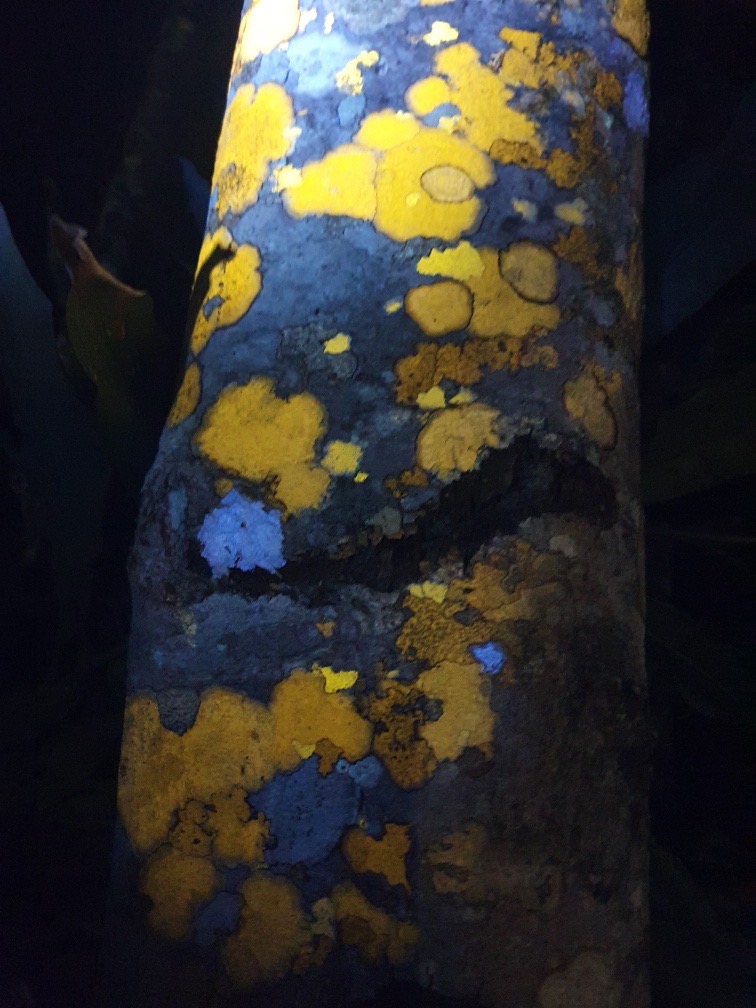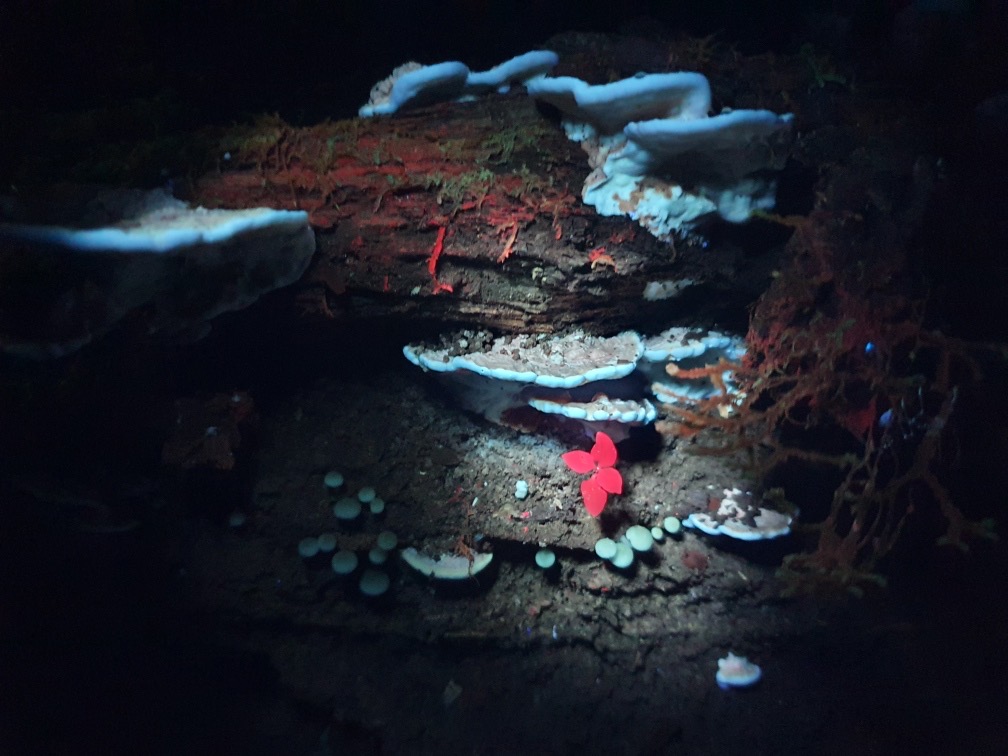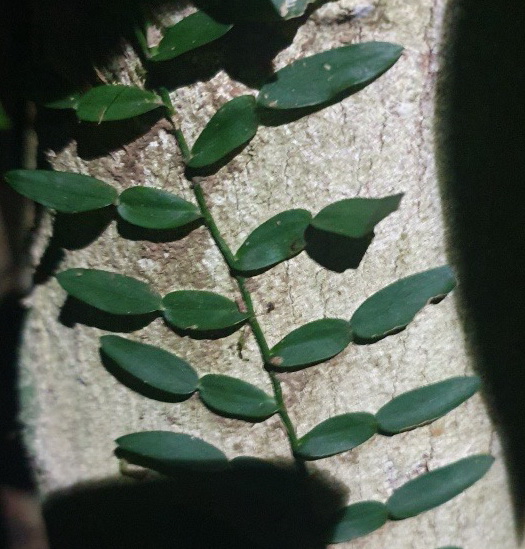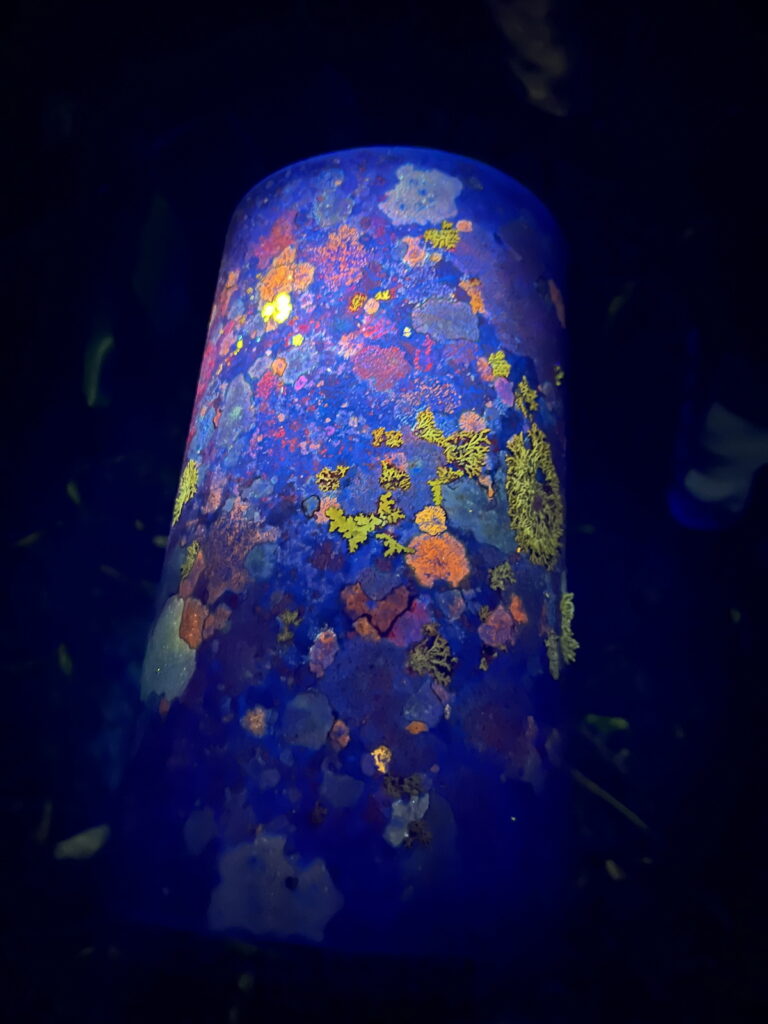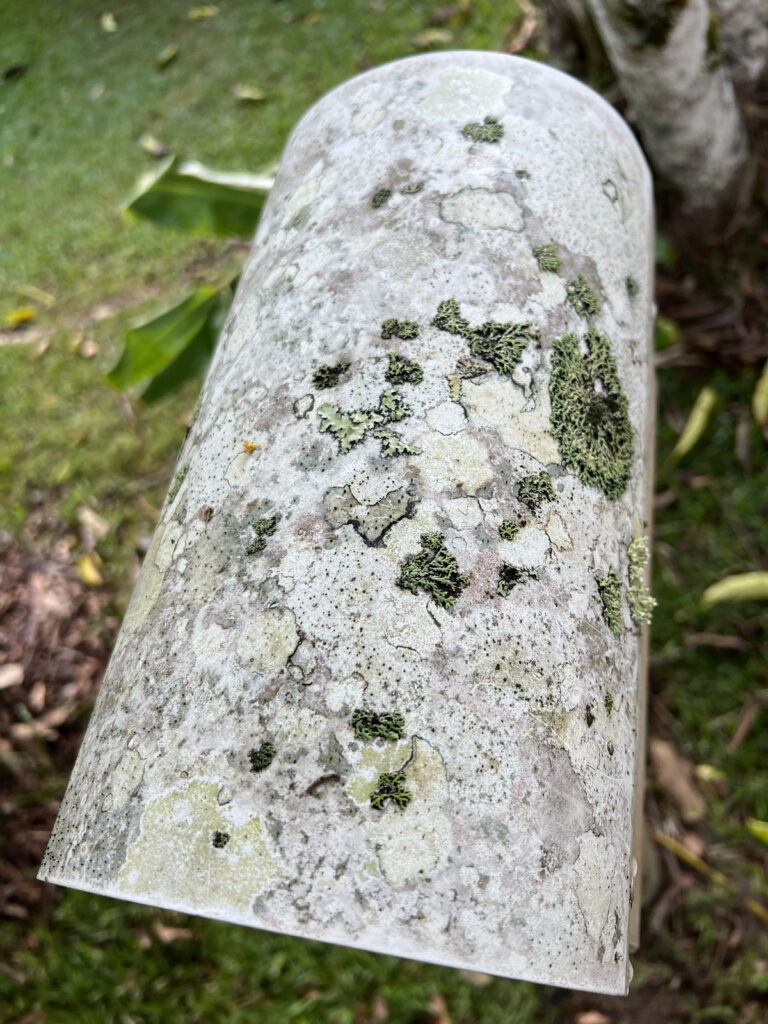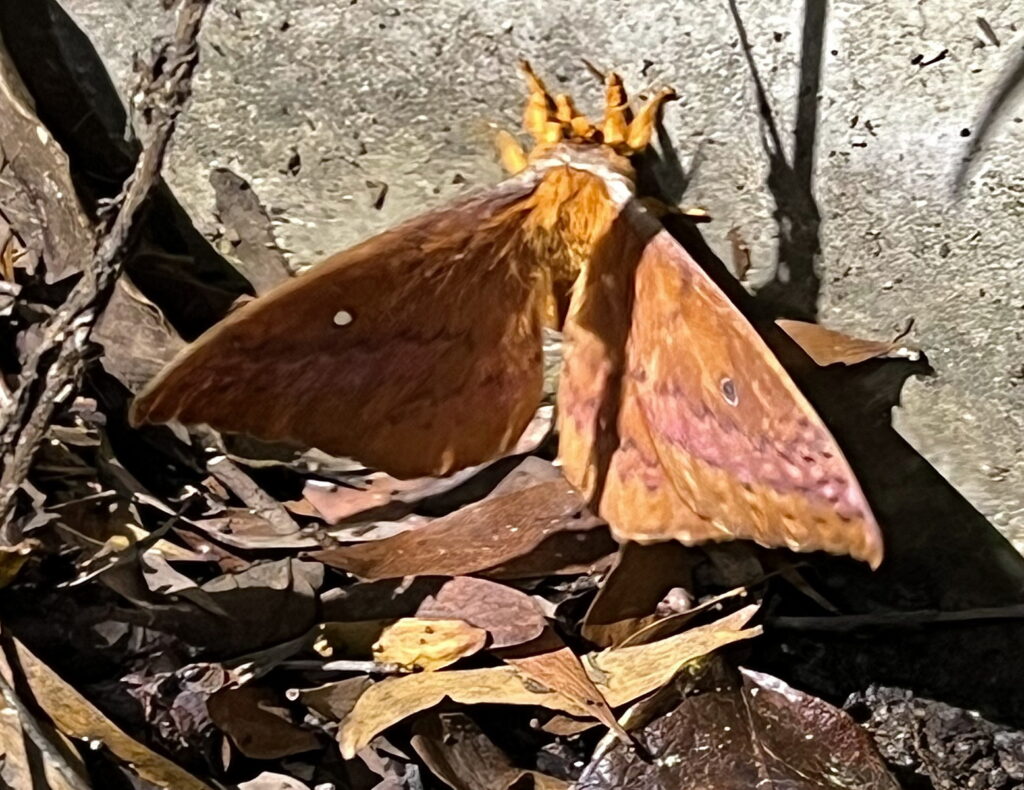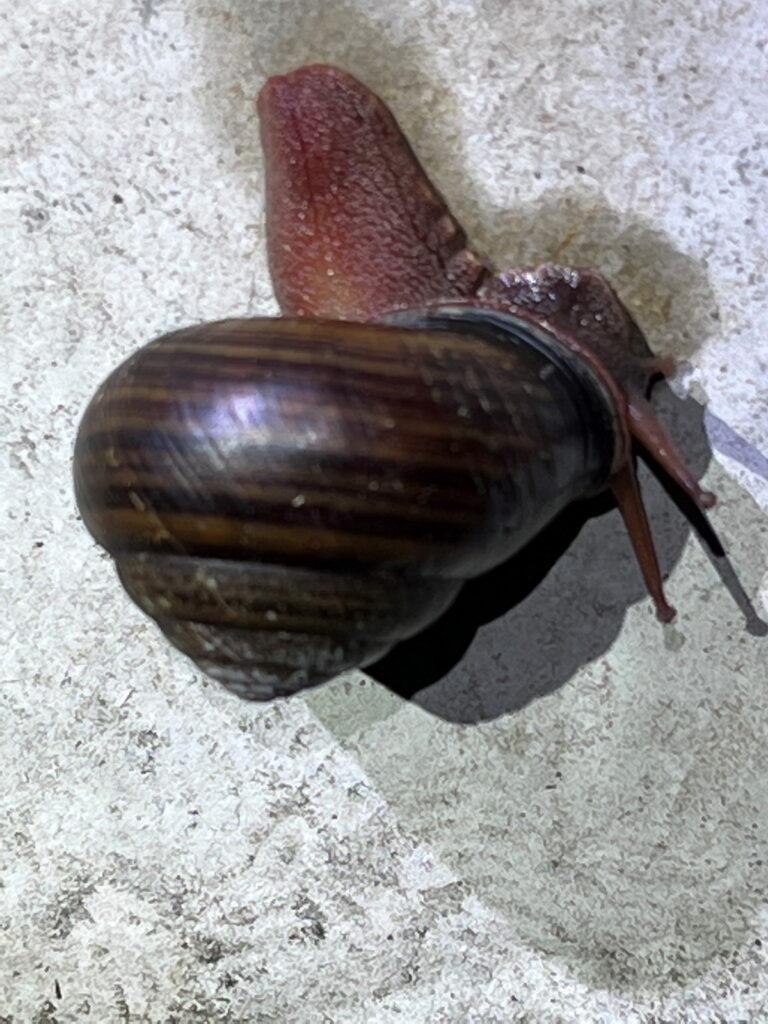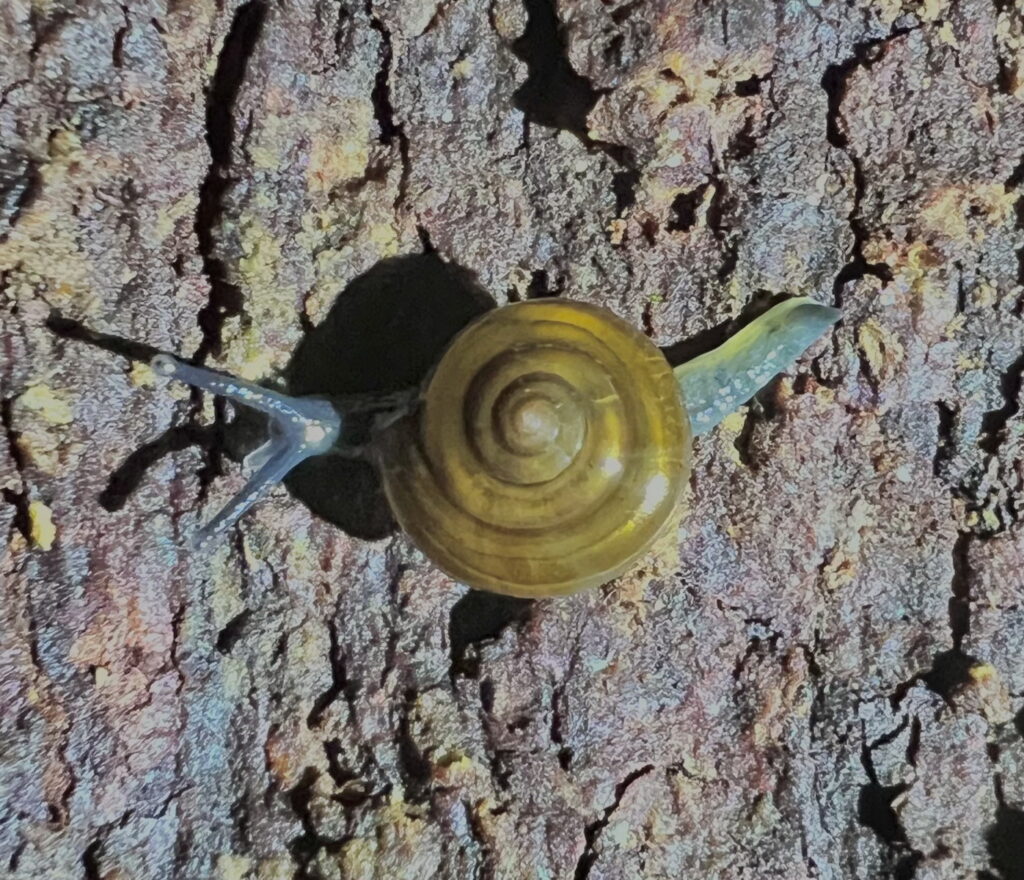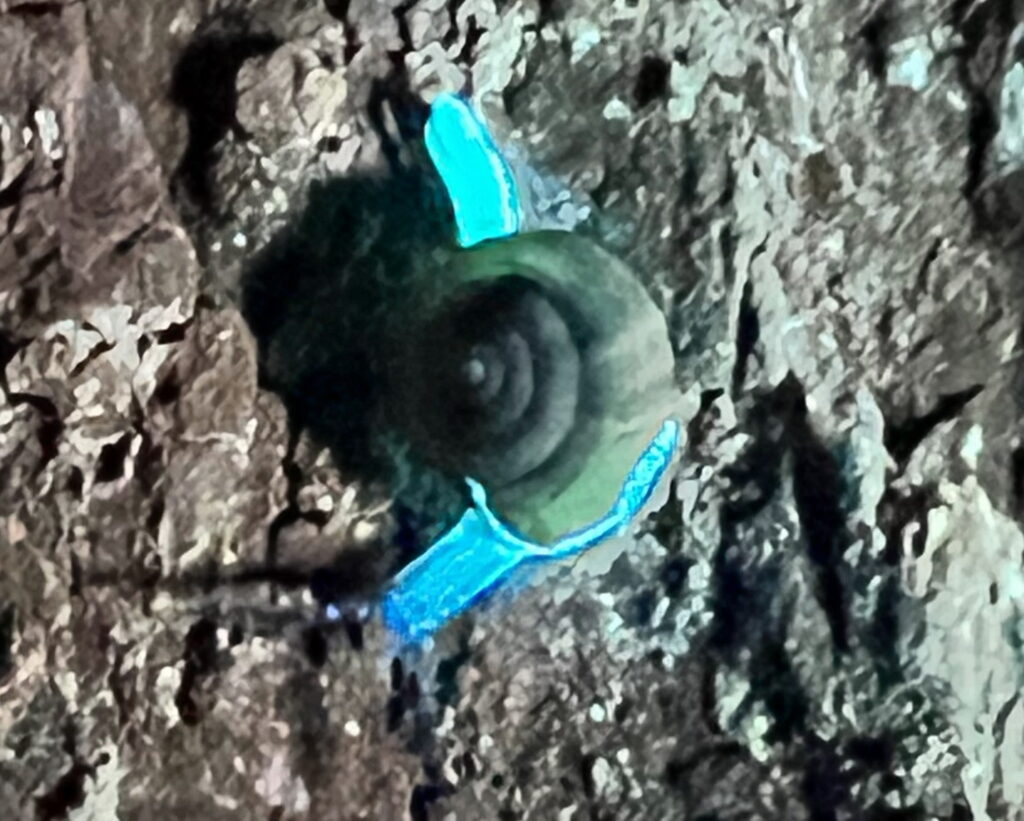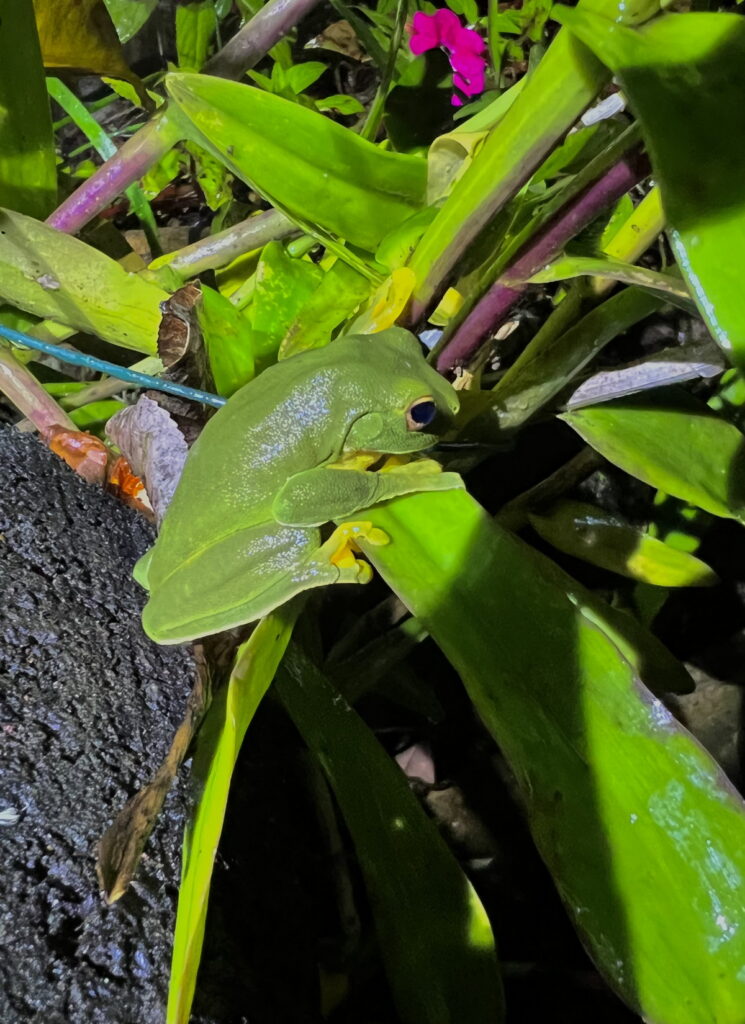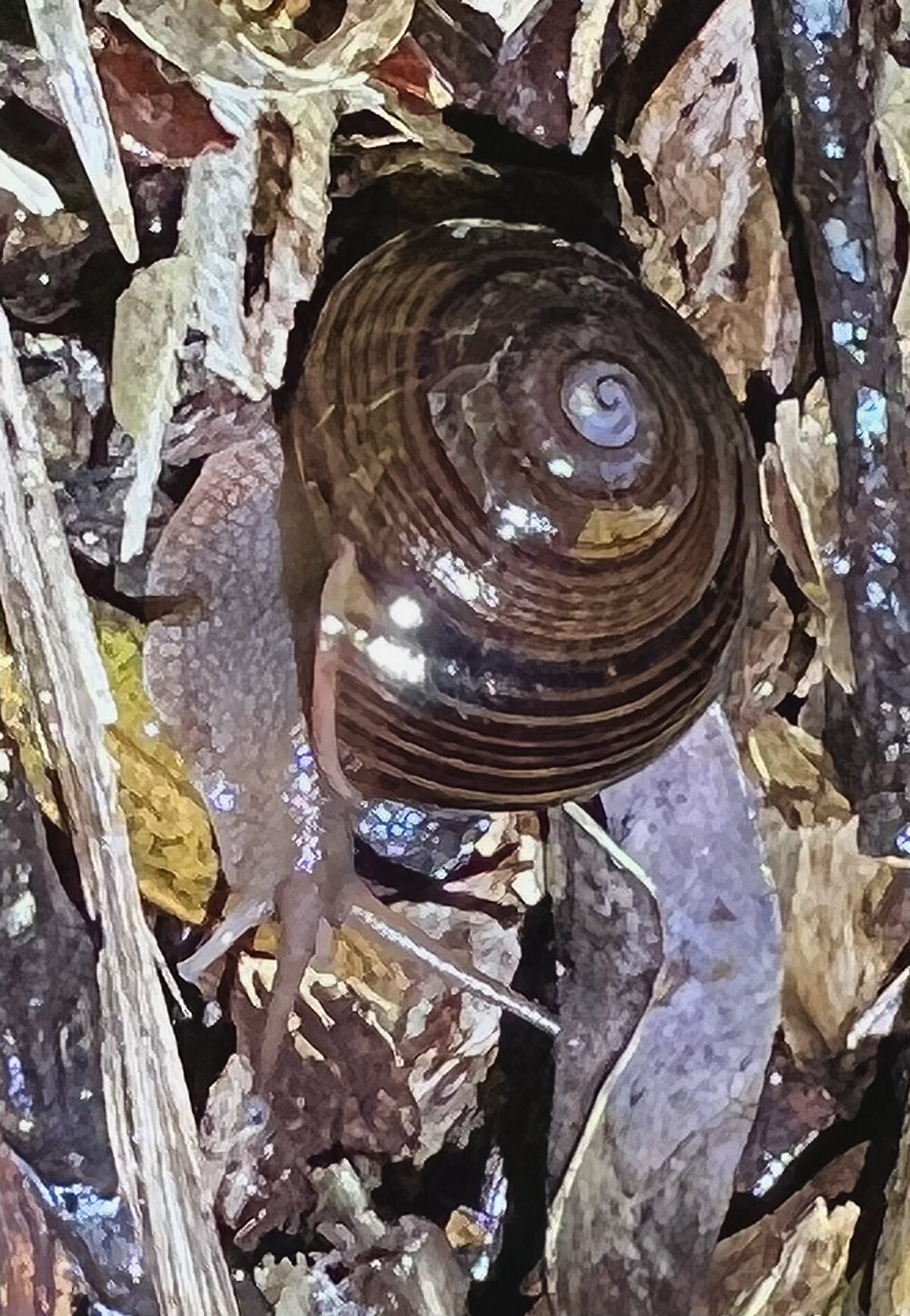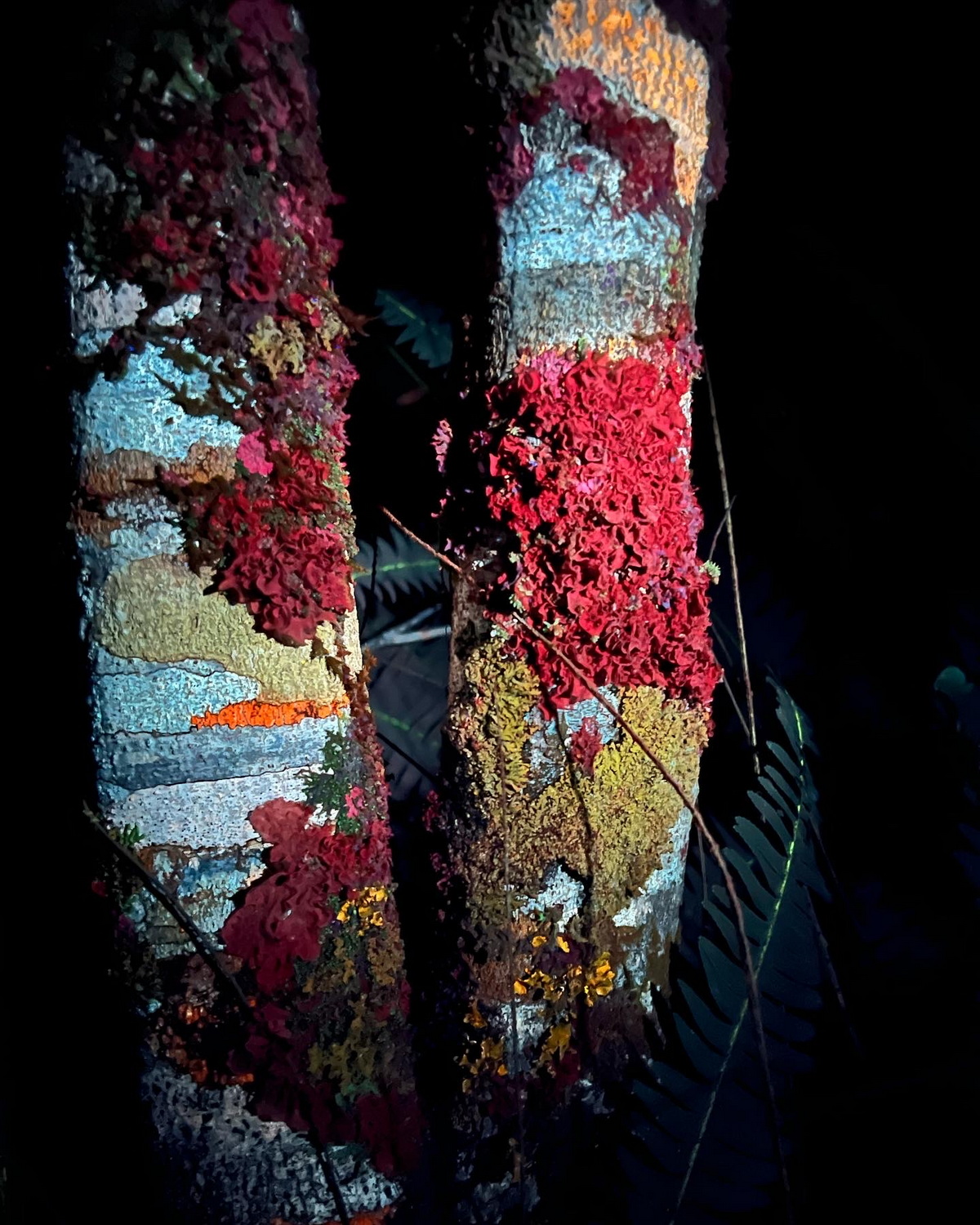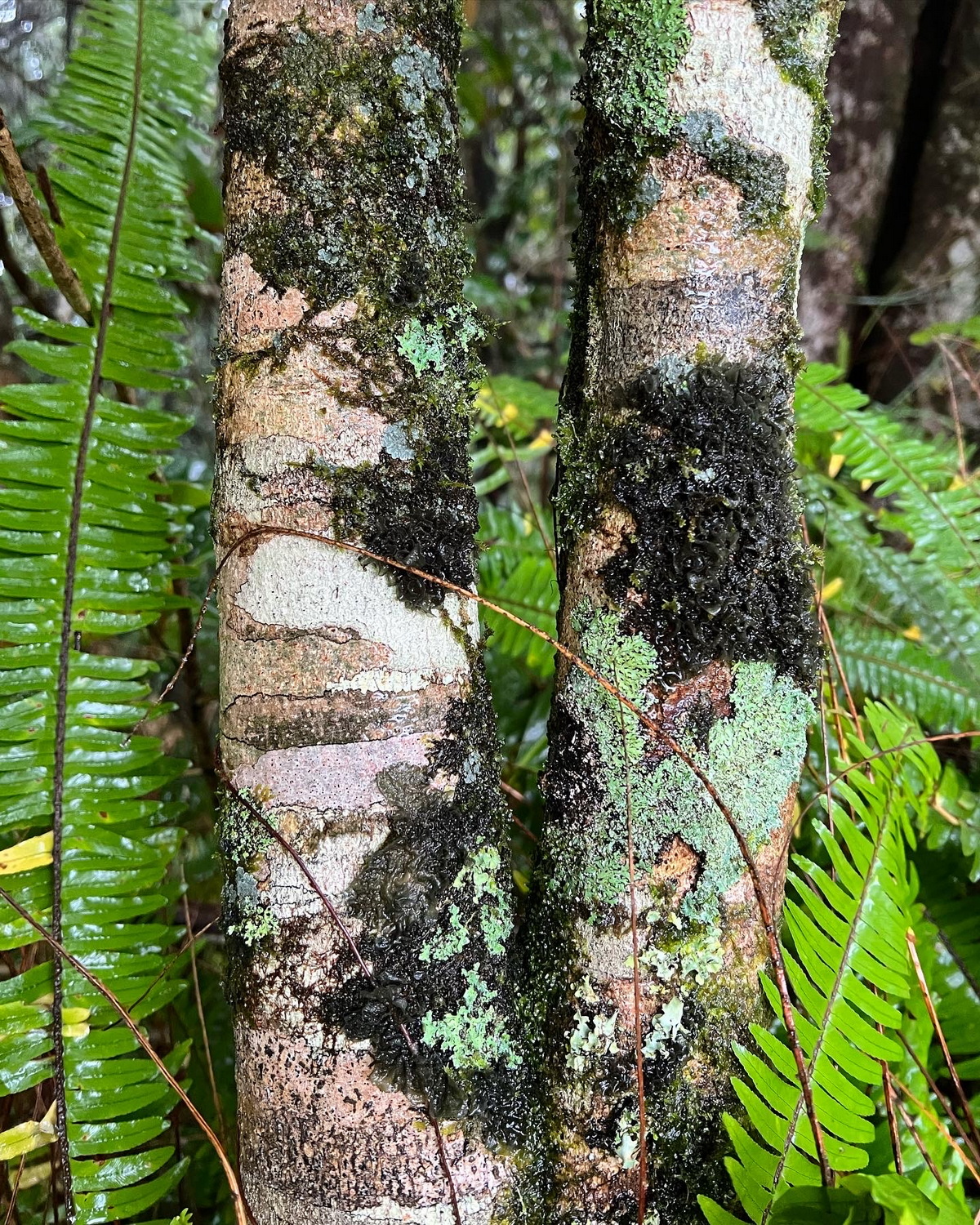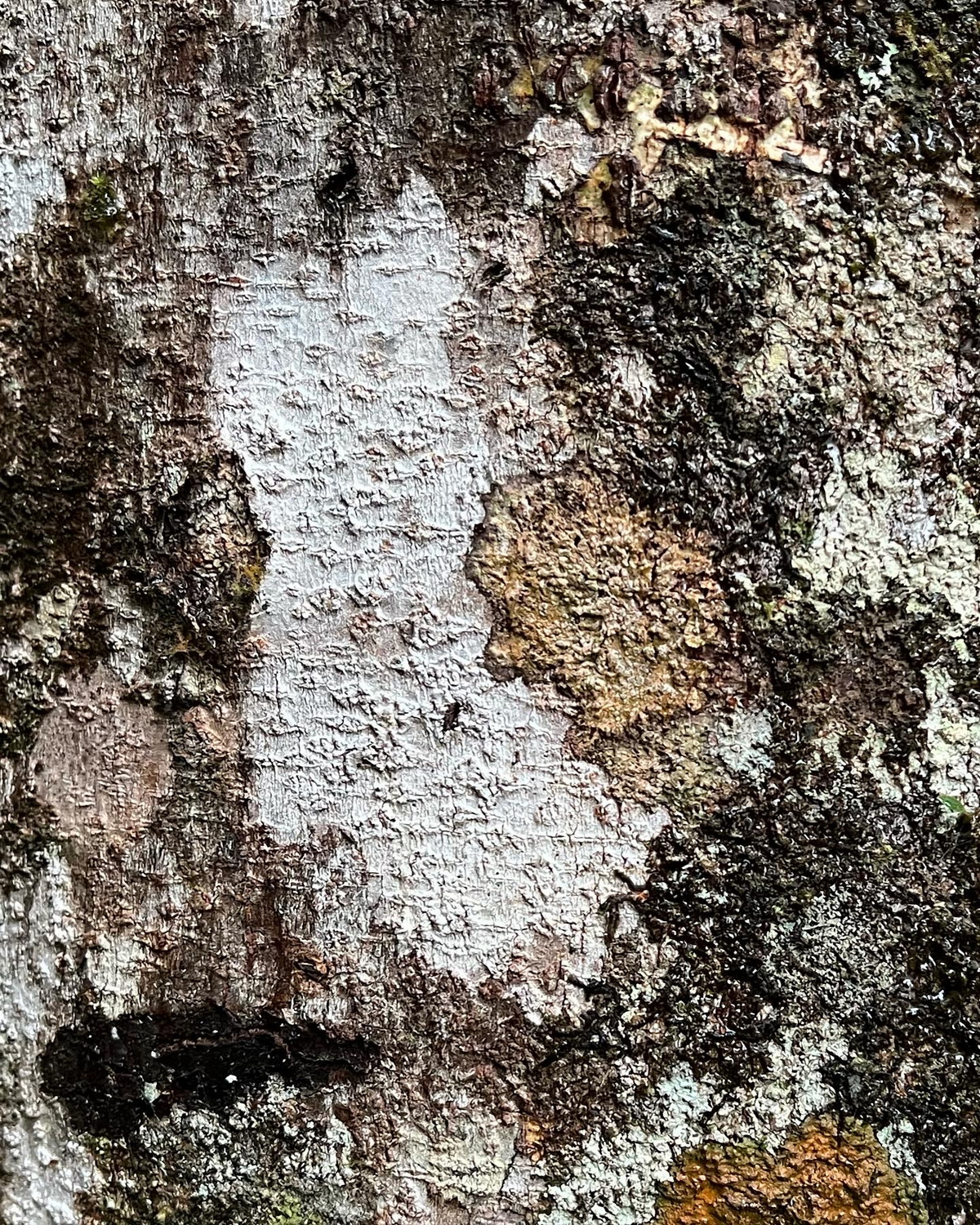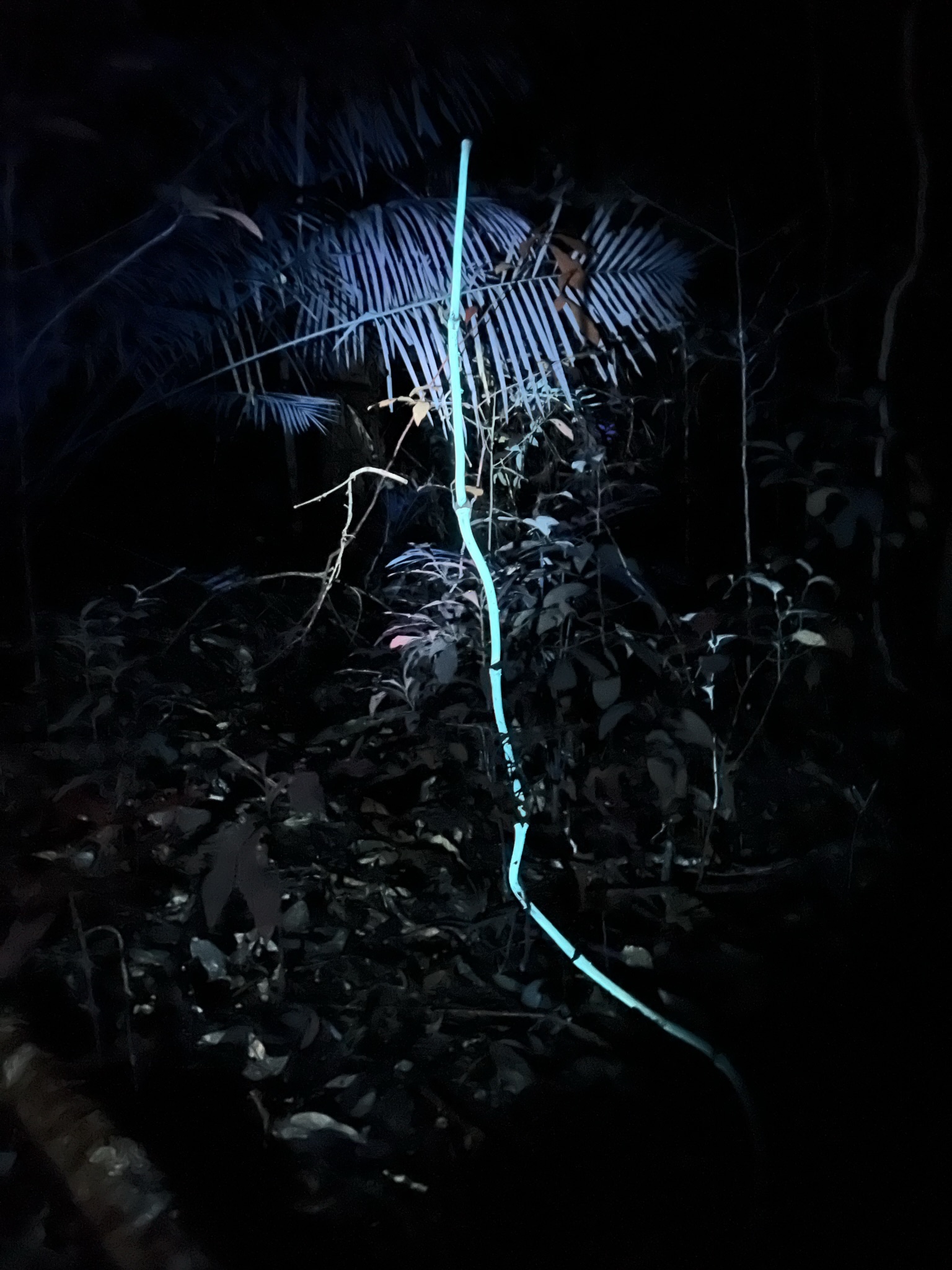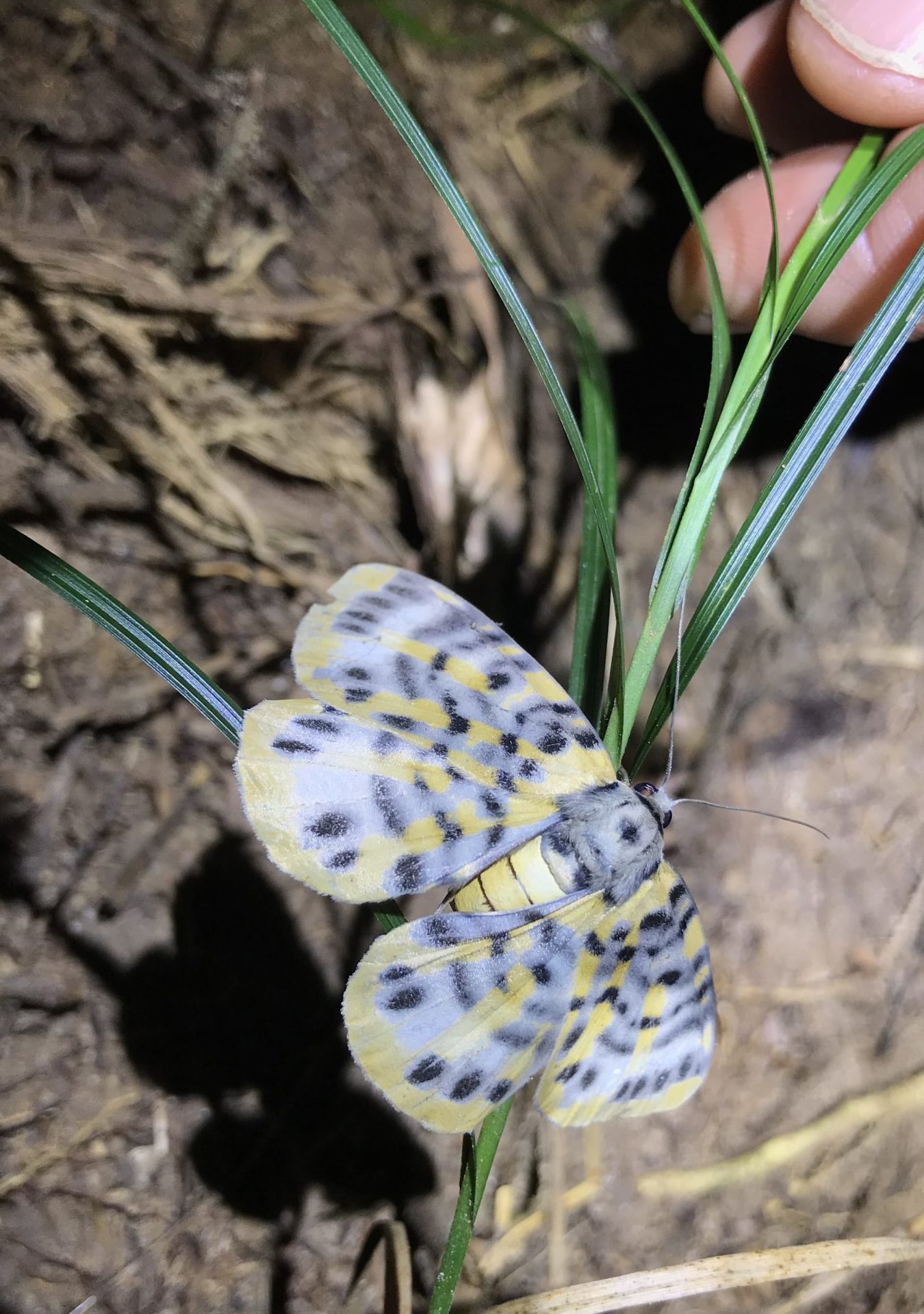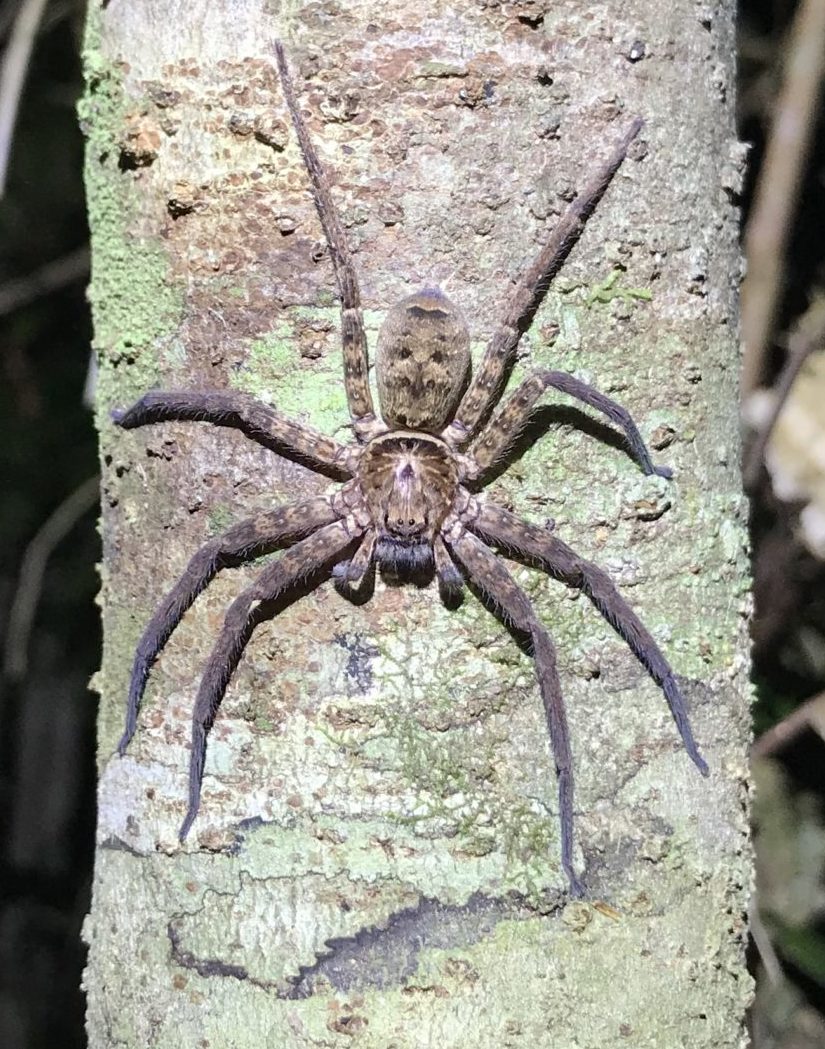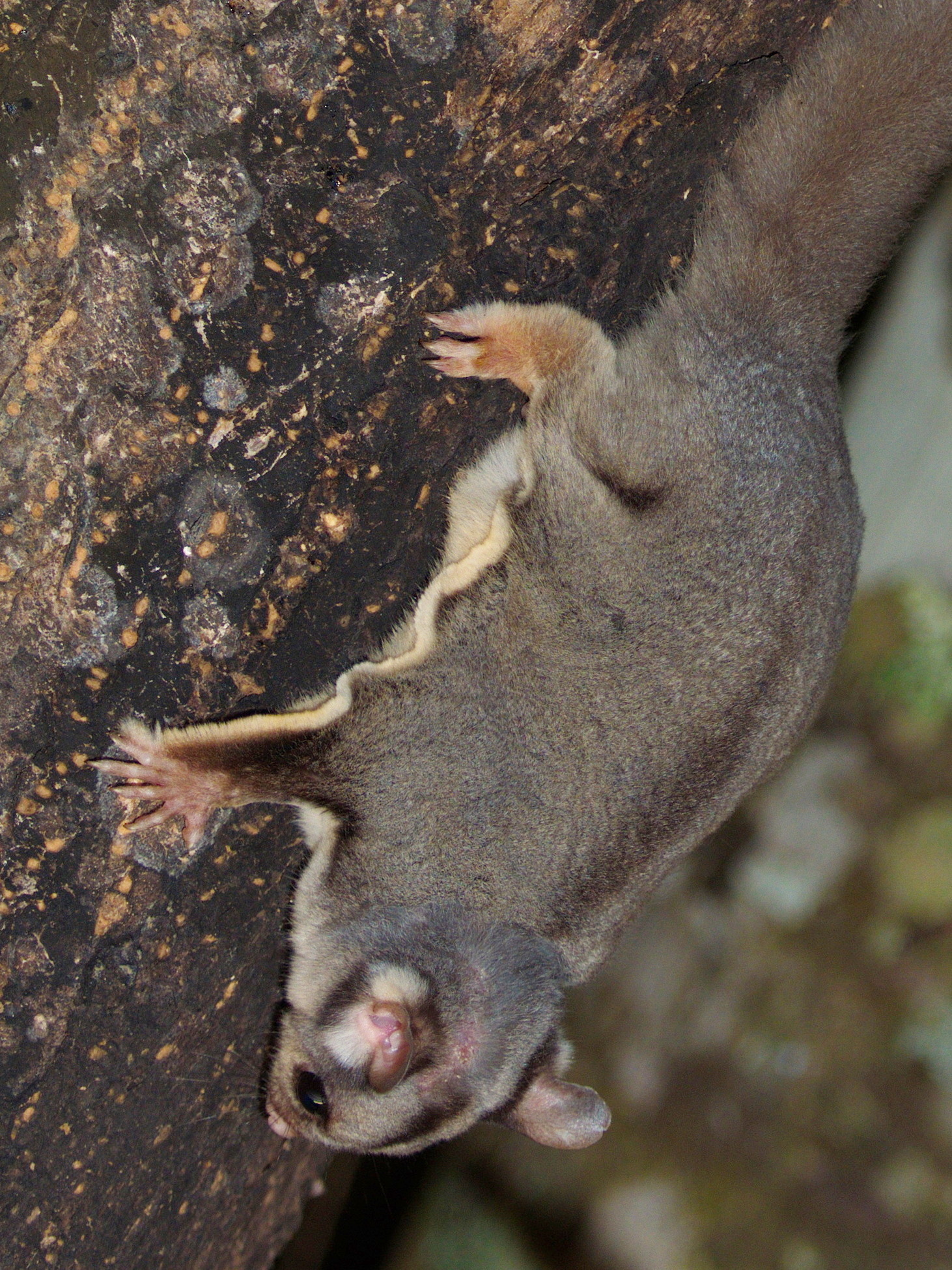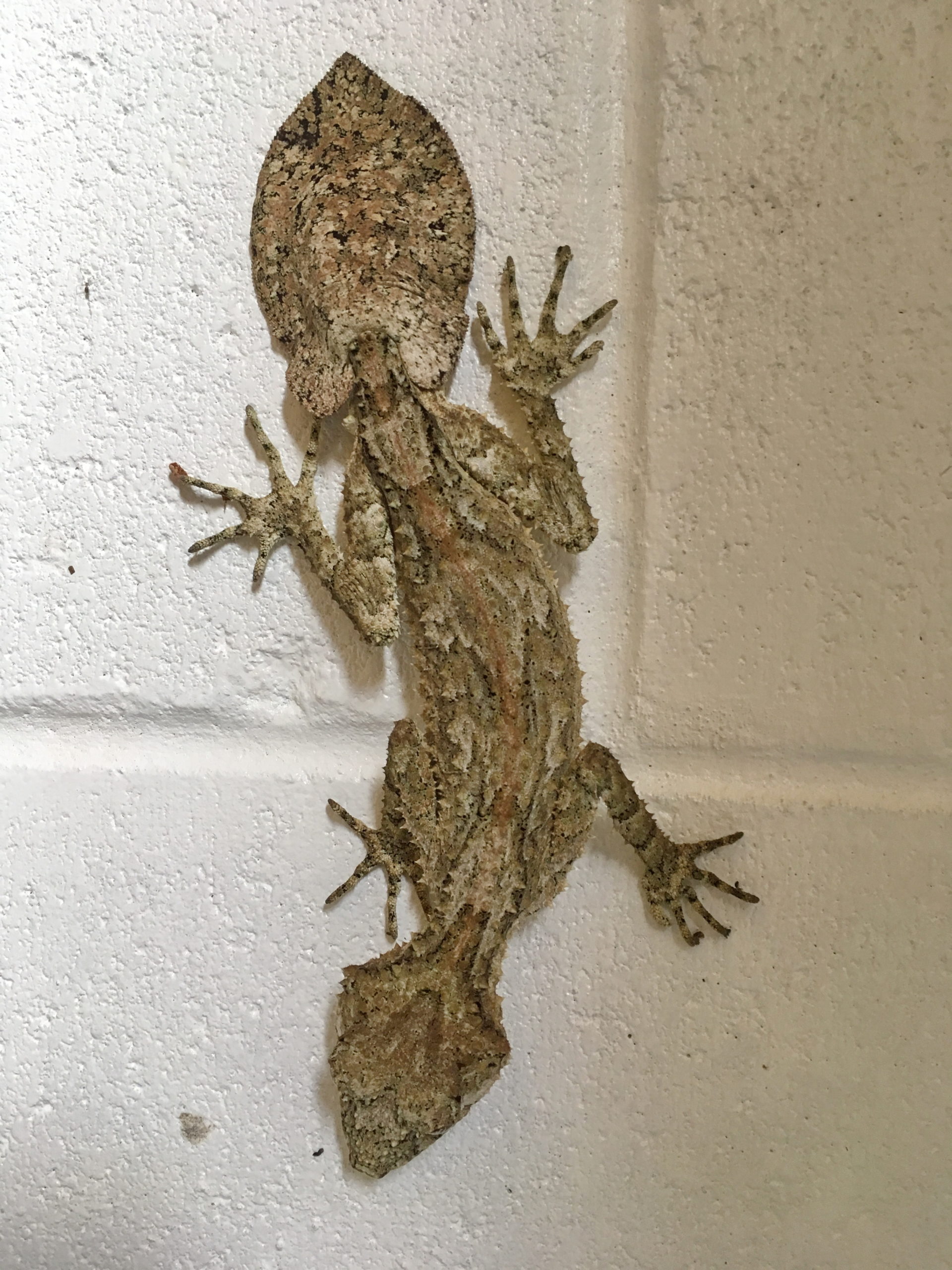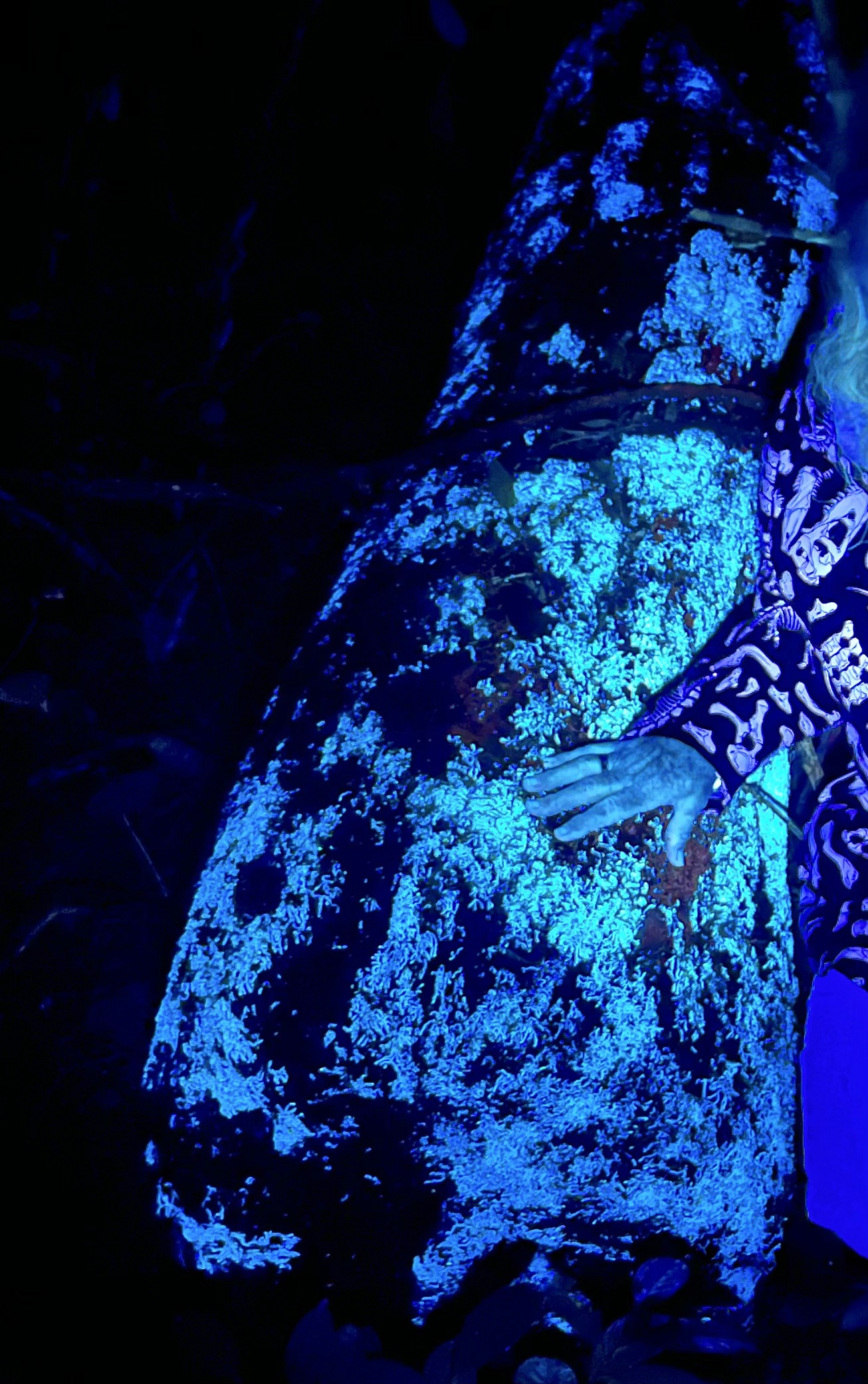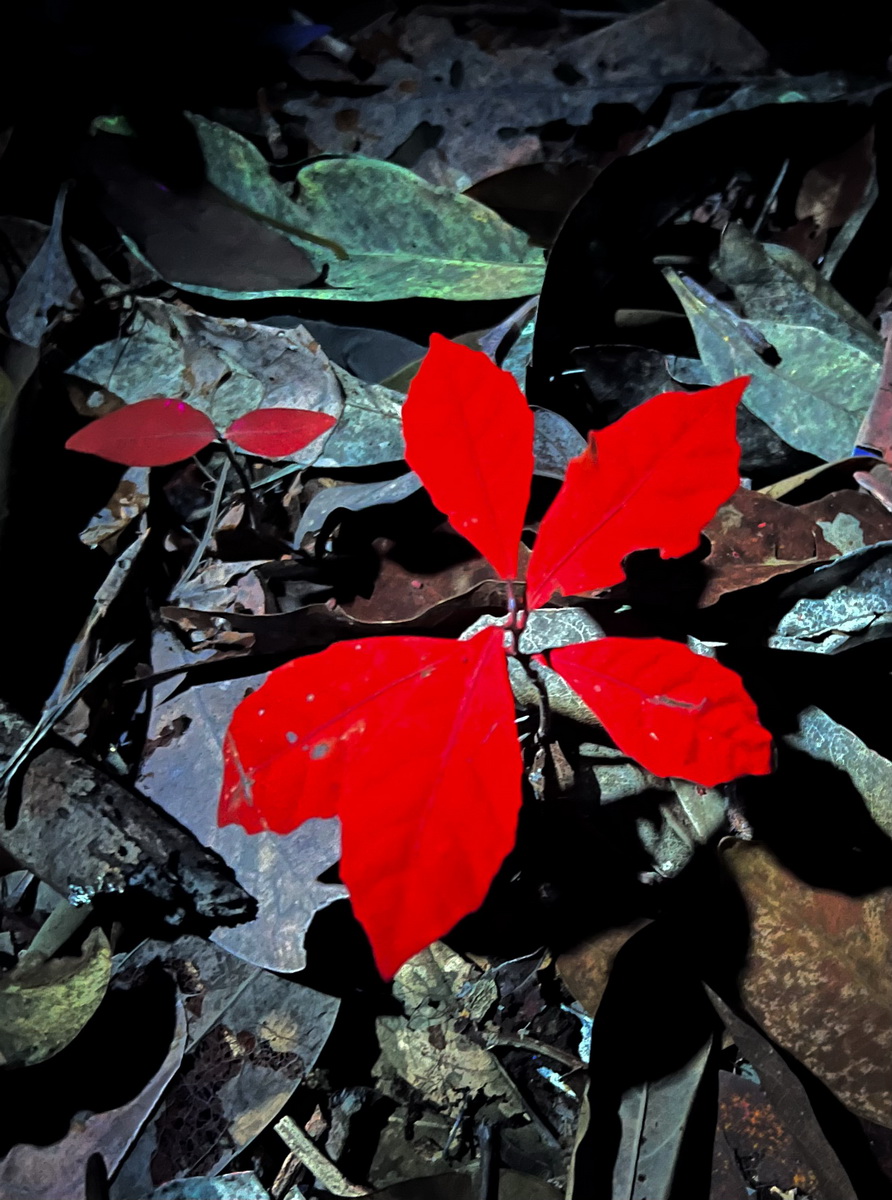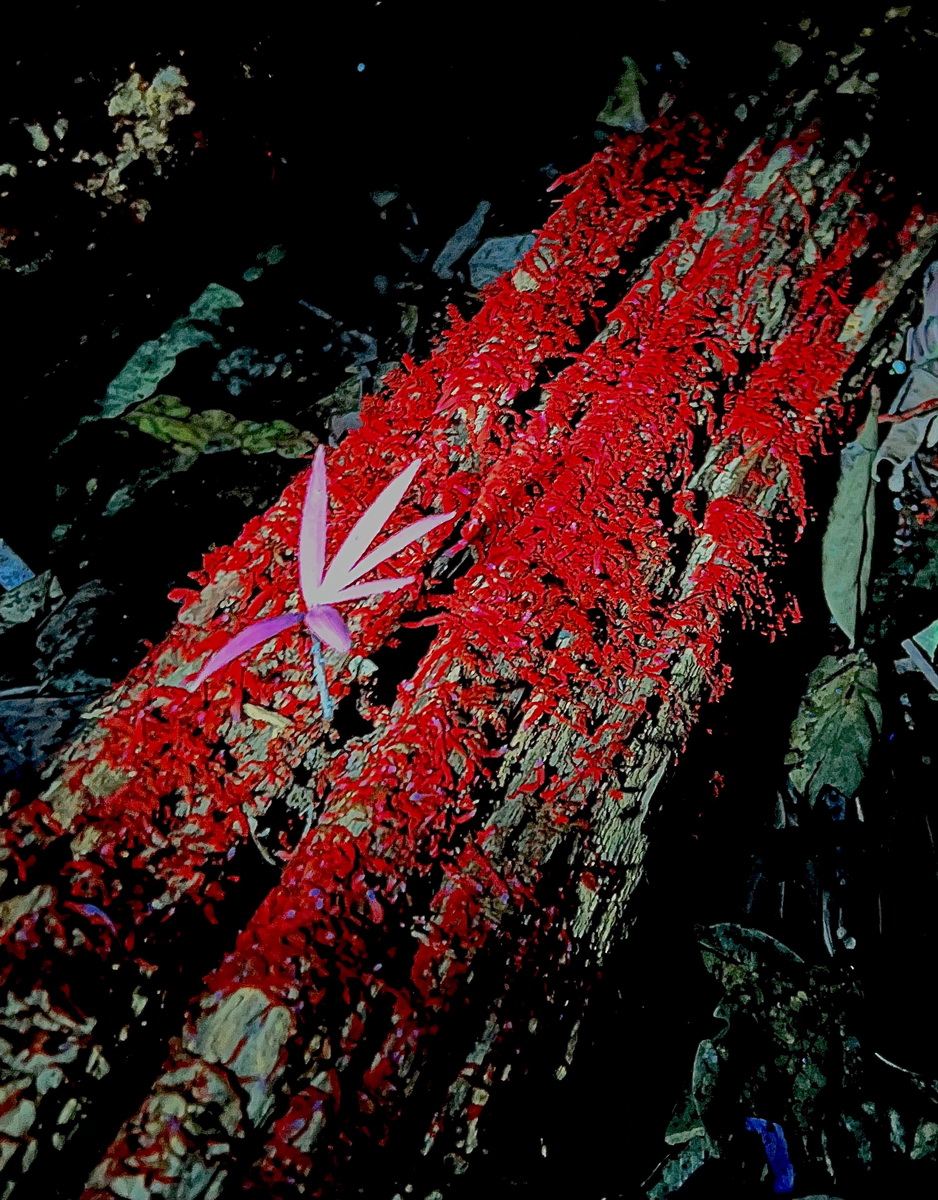Over the recent Easter weekend, Juanita and I went for an evening walk around Lennox Crescent. We discovered one of our local residents trying to cross the road in an utterly legless state. However, an excess of Easter cheer was not a factor in its slow progress. This particular resident was born legless, and when not trying to cross smooth packed surfaces like roads, its apodal state is a big advantage for its chosen lifestyle.
Our struggling neighbour was, in fact, one of two species of legless lizards that can be found in the rainforests around Paluma. While snakes have adapted well to rapid progress on open ground, legless lizards are mostly burrowing animals and their form is ideally suited to digging and pushing their way through soil and leaf litter, and hiding under logs and rocks. Legless lizards may sometimes be mistaken for snakes, but careful inspection shows that compared to snakes, they have: earholes (or covered depressions); long tails that are a significant proportion of their overall length; and no forked tongue.
I took several pictures of this beautifully coloured lizard once back at home and hoped to get further close-ups and naturalistic shots the next morning but it managed to escape its temporary home early the next morning, so I am left with these hand-held images. They were enough for me to be pretty confident in identifying it as the limbless snake-tooth skink (Coeranoscincus frontalis).
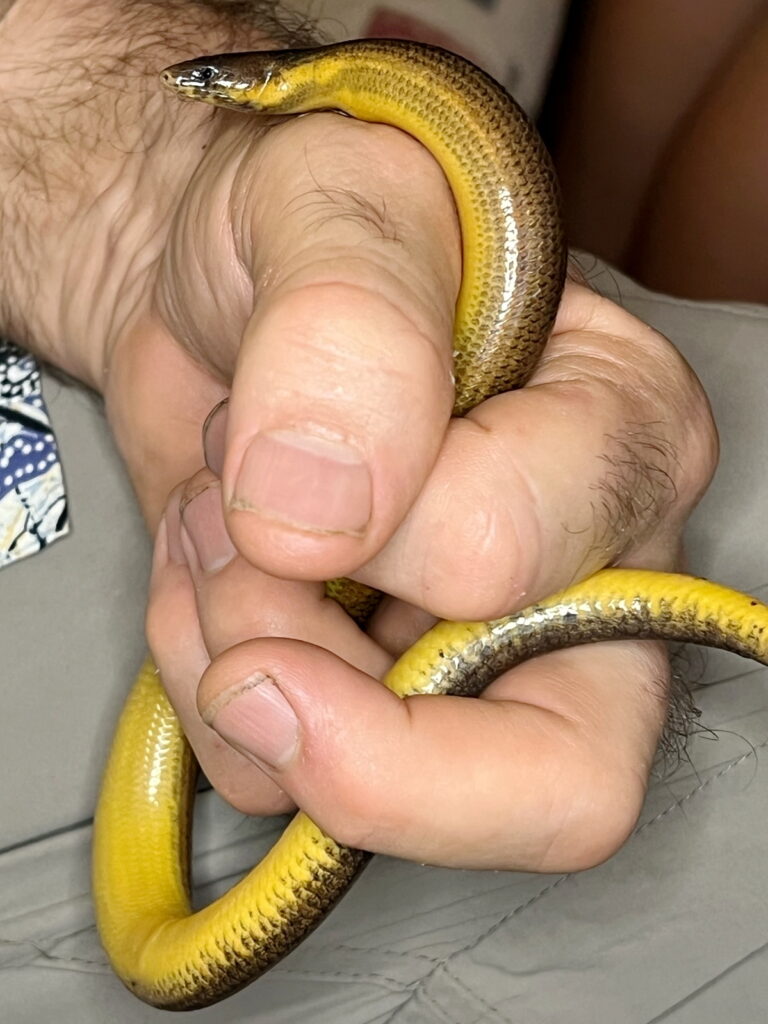
Photo by Juanita Poletto
This species is fairly common (but infrequently encountered) in the wet tropics. It is thought to be nocturnal and is commonly found in rotten logs or in the soil under logs and rocks. As suggested by its common name, members of the genus have relatively large recurved snake-like teeth and in a related species (C. reticulatis) stomach contents suggest it eats earthworms, beetle larvae and other insects. The sharp recurved teeth may be an adaptation to capturing and holding the large, muscular writhing earthworms that are commonly found in our rainforests and local gardens.
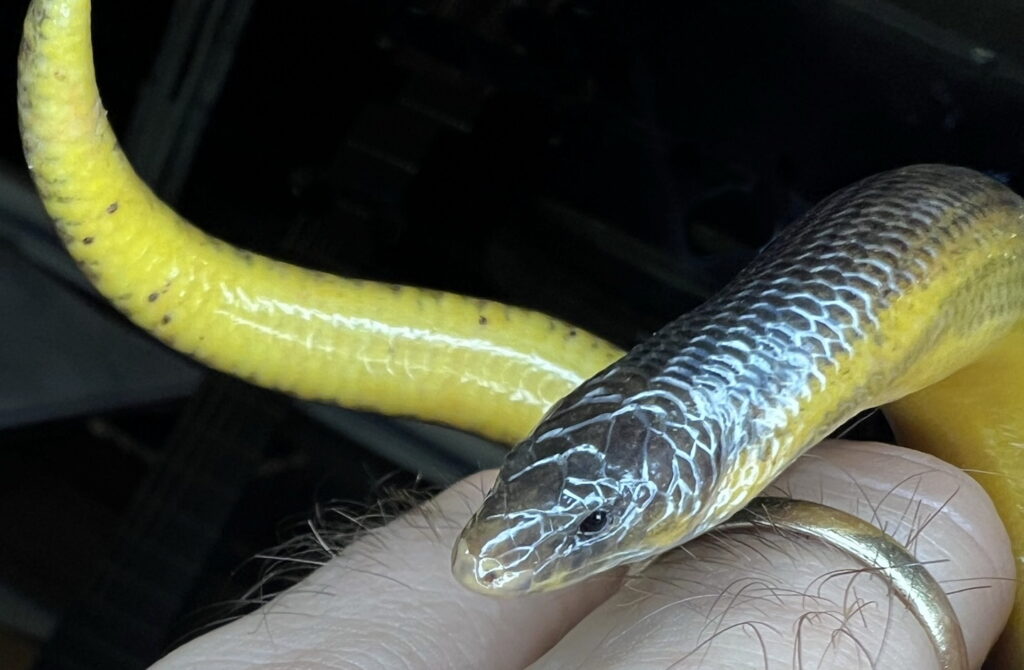
Photo by Jamie Oliver
Leglessness has independently evolved in at least 7 different families of lizards (and one clade of six closely related families). Most of our commonly found legless lizards in Queensland belong to the family Pygopodidae (related to geckos), however, C. frontalis is actually a member of the skink family.
A recent publication in the Australasian Journal of Herpetology has suggested that C. frontalis is actually 3 separate species that have distinct geographic distributions. The individuals that are found between Paluma and Mt Elliot have been recognized as a new species: Coeranoscincus pailsei. In case you were under the misapprehension that taxonomists are humourless nerds with no social life, check out the note from this publication on the derivation of this new species name:
The new species C. pailsei sp. nov. is named in honour of Roy Pails of Ballarat, Victoria, Australia in recognition of his many contributions to herpetology spanning many decades. Quite appropriately, I note his love of alcohol and his regular habit of drinking himself “legless” with Peter Whybrow (see above) and others, including at my wedding in year 1999, which is appropriate and relevant when naming a legless skink in his honour.
Hoser, RT (2022) Austrasian Journal of Herpetology 59:32-47
Text by Jamie Oliver; photos as indicated.

